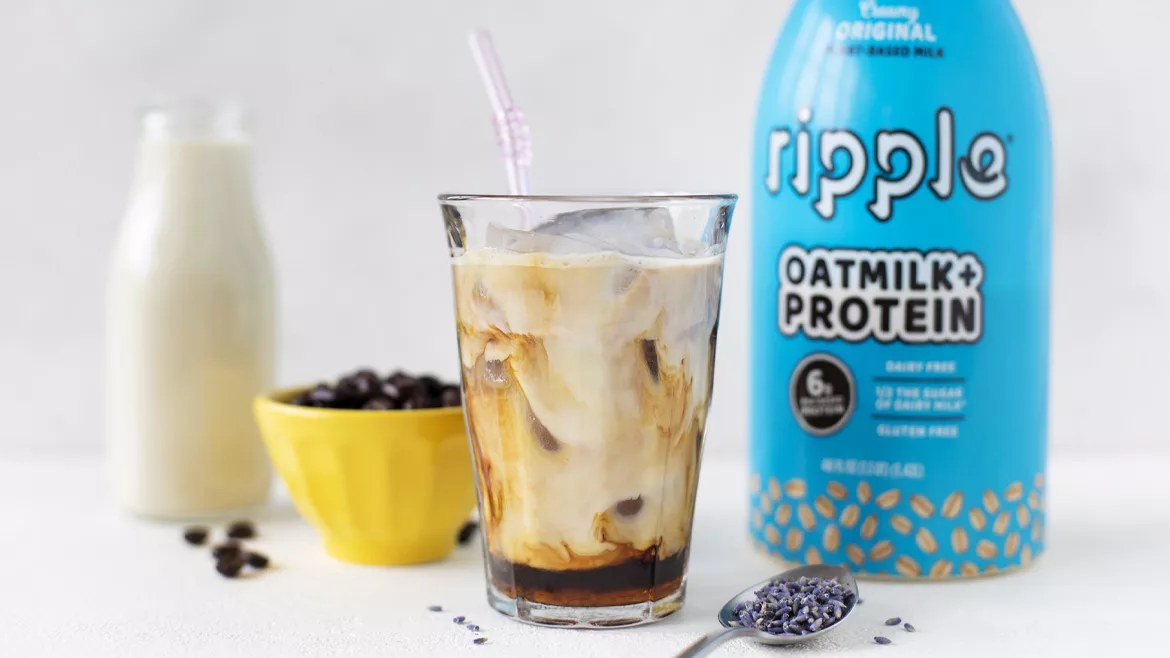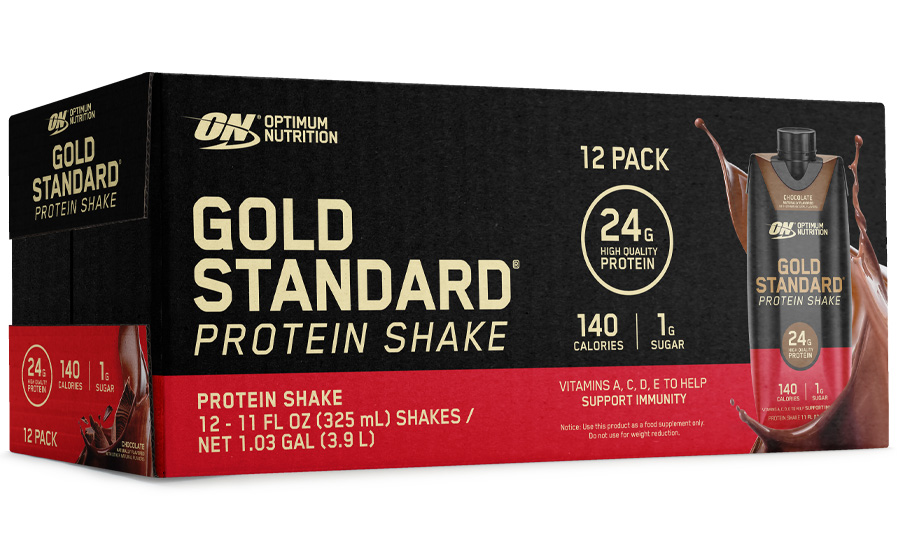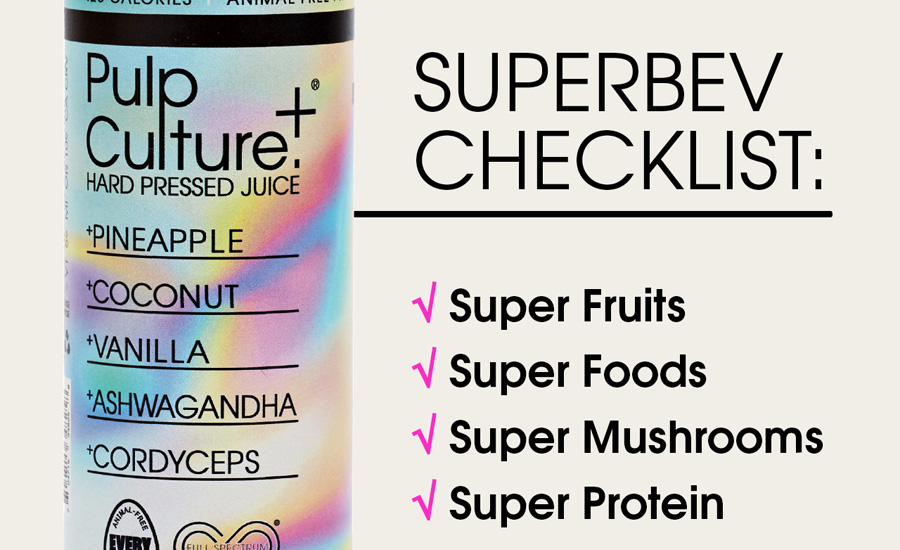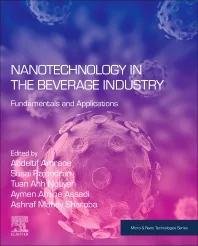Ingredient Spotlight
Protein shows its all-inclusive appeal for beverage solutions
Ingredient’s usage increases as consumers take proactive approach to health

Ripple released Oatmilk + Protein, an oatmilk that contains three times more protein than regular oatmilk offerings, it says.
Image courtesy of Ripple Foods
The active gaming experience company Activate allows kids and adults a chance to test their physical and mental agility across its variety of unique rooms. With varying degrees of difficulty for each game, no one needs to worry about a task being too hard, allowing for everyone to engage with the platform, the company notes in its video demo. This all-inclusive mentality remains relevant to active nutrition consumers who are seeing more consumers engage in the community across all stages of life and lifestyle.
“More and more, consumers are actively seeking out protein-forward beverages, as they take an increasingly proactive approach to holistic well-being,” says Micah Greenhill, marketing director of beverage for ADM, Chicago. “This is particularly true, as the active nutrition space continues welcoming consumers from varying life stages and lifestyles.
“Interestingly, a reported 53% of consumers are classified as active nutrition consumers,” he continues, citing the October 2021 FMCG Gurus report “Overview of the Sports Nutrition Market and growth of the Active Nutrition Consumer.”
Ingrid Montgomery, senior applications scientist at Hilmar Ingredients, Hilmar, Calif., notes that initially protein beverages were influenced by sports and performance markets, but that has changed.

Image courtesy of Glanbia Performance Nutrition
“More types of consumers are looking for additional protein sources to improve their overall health and well-being, and not just build muscles,” she says. “Having a convenient option that tastes good and also offers health benefits is now becoming mainstream.”
Christine Addington, technical services manager at Cargill, Wayzata, Minn., notes that consumers are making more conscious decisions about their food and beverage choices, and protein aligns with those decisions.
“Consumers are taking a more holistic, proactive and preventative approach to health, prompting them to be more mindful of their food and beverage choices,” she says. “The pandemic only amplified this trend. Protein remains the nutrient consumers most actively seek, thanks to its association with a raft of health benefits.”
Also spotlighting protein, ADM’s Greenhill explains that the active nutrition space is seeing consumers gravitate toward specific health and wellness needs.
“Many people are leaning on protein-forward beverages as a way to receive that tailored support. In fact, 58% of active nutrition consumers have increased their overall intake of protein, including products formulated to be high in protein, such as ready-to-drink (RTD) beverages and milk protein drinks,” Greenhill says, citing FMCG Gurus 2021 Active Nutrition Survey.
Hilmar’s Montgomery also highlights how the demand for protein fortification is cross pollinating with convenience trends.
“Consumers are looking for more convenient beverages that also enhance their overall health,” she says. “There is a trend toward different styles of protein-fortified beverages beyond traditional RTD shakes and protein powders. More choices in juices, coffee, tea, waters and even carbonated beverages is what consumers want.”
Firmly ‘planted’ protein
As the active nutrition consumer is becoming more diverse, experts note that beverage-makers have no shortage of choices when determining what protein type to utilize.
“The protein-fortified beverage space has been one of the most dynamic categories for the last decade ― especially if we zero-in on the plant-based segment,” Cargill’s Addington says. “It has grown from a small niche into a market force with true mainstream appeal.
“Recent developments suggest it’s far from done, as consumer demands for products with great taste, high protein, reduced sugar and a solid sustainability story align with ongoing ingredient advances related to sweeteners, texturizers and plant proteins,” she continues. “Together, these forces are kick starting a fourth wave of innovation, which promises to dramatically boost both protein levels and consumer appeal for plant-based, protein-fortified beverages.”
For the plant protein market, Cargill and its partner PURIS continues to perfect pea proteins for beverage fortification.

Image courtesy of Pulp Culture
“Within the plant protein space, we’ve seen a steady stream of advances over the last decade ― work that continues today,” says Kushal Chandak, vice president of research and development (R&D) for PURIS, Minneapolis. “The latest generation of PURIS pea proteins, PURIS 2.0, is a great example, as it has the highest solubility, smoothest and creamiest mouthfeel, and best taste ever. As a result, it’s possible to push protein levels higher without the negative sensory effects that typically come into play.”
Chandak notes that in food and beverages with a pH less than 5, plant proteins typically have been unstable because of the isoelectric they possess.
“To mitigate this gap, PURIS has invented PURIS HiLo: an acid-stable protein that gives the industry an option to fortify fruit juices, energy shots and more with pea protein,” Chandak says. “Another key aspect this ingredient brings is its low viscosity and high solubility, thus not impacting the final texture of the product ― an important aspect when it comes to product formulation.
“Even more improvements are coming as we continue to expand our pea protein offerings, pioneering new processing techniques and developing SKUs with improved functionality for specific applications,” Chandak continues.
Merit Functional Foods, Winnipeg, Manitoba, also recognizes the hurdles facing plant proteins when it comes to RTD protein beverages. Earlier this year, it released Peazazz C, a pea protein that enables a smooth, grit-free texture in RTD beverages, without chalkiness, it stated at the time of the release.
“Consumers trying plant-based applications such as RTD beverages are often noticing a gritty texture, with sediment accumulated at the bottom of the bottle,” said Merit’s co-CEO Ryan Bracken, in a statement. “Peazazz C is the solution formulators have been looking for to solve this common issue. With its high solubility and low viscosity, it has the functionality that formulators need to deliver an optimal sensory experience.”
As plant proteins have gained in popularity, ADM’s Greenhill notes the importance of beverage-makers evaluating the differing attributes these ingredients can impart on protein drinks.
“Certain plant protein solutions, like pea and soy, may contribute to protein diversity and increase a product’s protein content, but they may also impart gritty textures or inherent offnotes like bitterness or earthiness,” he says. “High levels of these plant proteins can also impact beverages’ viscosity, color and flavor. However, we’re able to address many of these formulation challenges through our expansive plant protein portfolio.
“We start with high-quality proteins with clean flavor and color profiles,” Greenhill continues. “Then, if needed, we combine them with taste modulation flavors and texture stabilizers to create high-protein beverages like shakes, plant-based yogurt drinks and more, all with consumer-preferred sensory experiences.”
Greenhill adds that ADM’s soy and pea proteins can provide functionality for a variety of active nutrition solutions. “Specifically, our clean-tasting soy protein isolates provide critical viscosity, emulsification and water binding characteristics to create beverages, yogurts and other active nutrition products consumers love,” he says. “They also contain 90% protein concentration for bolstered protein fortification. Alternatively, our pea protein powders offer a neutral flavor and color, highly soluble and enhanced functional solution for protein-forward beverages.”
A wave of solutions
Although plant proteins are on the rise, experts note that consumers tend to embrace a variety of protein sources.
“Active nutrition shoppers also appear to be open to many different types of protein in their product purchases ― plant, whey and blends of different protein sources all have potential in this market category,” Greenhill says.
Hilmar’s Montgomery points to the importance of protein selection and how combination profiles can help reach content and mouthfeel targets.
“In some cases, such as for neutral ready-to-drink beverages, a combination of different proteins, including whey proteins, is employed to achieve the protein target,” she says. “A blend of proteins can also help with optimizing and achieving the characteristics and other targets that are required for a successful RTD beverage, including solubility, stability, shelf life and cost.”
Montgomery also calls attention to the benefits of whey proteins specifically for RTD beverages.
“Whey proteins are often a desirable protein source for RTD protein beverages because of their excellent nutritional qualities, bland flavor, ease of digestibility and unique functionality in beverage systems,” she explains.
Beyond its stability in RTD formats, Montgomery touts the nutritional benefits that whey proteins can deliver.
“There are nine amino acids that are considered essential to our body because we can’t make them on our own,” she says. “Whey protein contains all nine of these essential amino acids at optimal levels compared to alternative protein sources. It is also highly digestible and more easily absorbed into the body.”
New age additions
What has helped protein fortification gain traction in the beverage market has been innovators ambition to add the ingredient to beverage formats beyond the traditional powders and protein drinks.
“Protein fortification is expanding to other beverage categories,” Cargill’s Addington says. “Issues around solubility, flavor and color make this difficult, especially with plant-based proteins. In functional waters or alcoholic beverages, consumers expect their drinks to be clear and have little tolerance for a grainy texture. This can be difficult to achieve ― especially as protein levels increase.
“We’ve seen some brands use milk proteins in this space, which generally offer more solubility and a cleaner flavor than most botanicals,” she continues. “However, the optimization work we’re doing with our joint venture partner PURIS may someday yield a pea protein that meets the solubility and color requirements necessary to make significant inroads into these applications.”
For high acid beverages looking to incorporate protein, Hilmar’s Montgomery highlights whey protein as an ideal solution.
“For high acid (low pH) clear RTD high protein beverages, often only one protein will be used, and the maximum protein amount will depend on the protein choice and the limitations of its functional properties,” Montgomery explains. “The ability to make a clear protein-fortified beverage is unique only to whey proteins.
“One unique type of whey protein that can be used in these types of drinks is a specially processed whey protein isolate, such as Hilmar 9020 WPI, which is clear in solution,” she continues. “This highly functional WPI with excellent clarity and heat stability is specifically designed for low pH clear beverage applications.”
ADM’s Greenhill notes that protein functionality in different beverage types boils down to the pH levels. This can impact flavor notes and other characteristics. As such, specific proteins are tied to pH levels of the beverage.
“When developing protein waters, which are low pH, or hot filled-products, formulators must tap very specific proteins that can handle those intense processing environments,” he says. “Acidified whey protein is the best option for protein waters, helping add protein while also keeping the water product clear.
“Interestingly, there are a multitude of protein options for coffee drinks, and both dairy and plant proteins can be used,” Greenhill continues. “This is due to coffee offerings being either retort or ultra-high temperature (UHT) processed, which helps to sterilize and extend shelf-life.”
As protein fortifications sees its utilization on the rise, suppliers are doing their part to ensure beverage-makers have the solutions they need to craft these functional offerings.
Looking for a reprint of this article?
From high-res PDFs to custom plaques, order your copy today!







